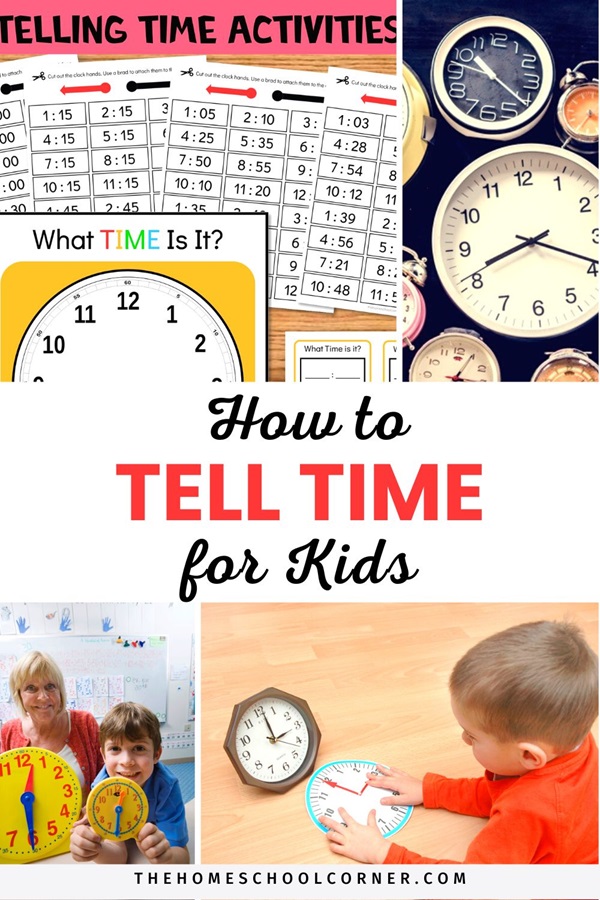
How to Tell Time - 4 Effective Teaching Strategies
Telling time is an essential life skill that children need to learn. It helps them manage their time, stay organized, and be responsible. In this blog post, we will discuss the importance of telling time and provide tips and resources for teaching children how to tell time.

"This post contains affiliate links, which means I receive a small commission, at no extra cost to you, if you make a purchase using this link."
Teaching How to Tell Time
Teaching children how to tell time can be tricky, but it is essential. Here are some easy-to-follow tips and strategies to make teaching time-telling a breeze:
Use Analog Clocks
Analog clocks are great for teaching kids about time. When they look at the clock and see the hour hand moving alongside the minute hand, it helps them understand how time works. This helps them see how minutes turn into hours, making it easier for them to tell time.

Use Digital Clocks
Digital clocks are helpful tools for teaching kids about telling time too. When they look at a digital clock, they can easily see the numbers displayed, making it simple for them to understand how the numbers represent different times of the day. This visual aid helps them connect the numbers they see with the actual passage of time.
You can use this printable Clock Face with digital time accessories as a fun activity when teaching how to tell time. Included are moveable hands, 96 digital time cards, and "What Time Is It?" cards for kids to record the time shown on the analog clock as the digital time.

Use Telling Time Worksheets
Using worksheets is an excellent method to help kids solidify what they've learned about telling time. They can practice this skill by completing activities like filling in the blanks on a clock or drawing the clock hands themselves. Below are some examples of worksheets that children can use to improve their time-telling abilities.
Telling Time Worksheets

Use Hands-on Activities
Hands-on activities make learning enjoyable for children. They can get creative by making their own clocks using paper plates or creating a daily schedule.
Visual aids, like diagrams and pictures, are also useful for teaching kids how to tell time. These activities engage children and make learning about time exciting and interactive.
Fun Activities for Learning How to Tell Time
Learning how to tell time can be exciting and enjoyable! Let's explore some fantastic activities that can help kids really understand how time works:
Play Games
Playing games is an awesome way to make learning about telling time super fun! Kids can have a blast with games like "What's the Time, Mr. Wolf?" where they guess the time, or "Time Bingo," where they match clocks to specific times. These games not only entertain but also help kids practice their time-telling skills in an enjoyable way.

Below are two telling time matching activities that are a fun way to assess skills learned. Kids can get lots of practice with these telling time activities too.
Time Matching Activity

Bees & Hives Time Activity

Create Clocks
Kids can have lots of fun making their very own clocks using simple materials! All they need are paper plates for the clock face, construction paper for the hour and minute hands, and a brad to attach the hands to the clock. After creating their clock, they can add numbers using a pen or pencil and then practice telling time by moving the hands around. It's a creative way for them to learn and have fun!

Make Schedules
To help kids learn how to tell time, it's important to start with the basics of understanding what time is all about. They should know that time is divided into different parts like days, hours, and minutes.
We can use everyday words like morning, afternoon, and night to help them grasp the idea better. We can talk about what happens before and after certain activities, like breakfast or bedtime. For example, we can chat with them about their daily routine to help them see how time passes throughout the day.
One fun way to reinforce this concept is by creating a daily schedule together. Kids can write down when they wake up, eat meals, play, and go to bed. It's a hands-on way for them to see how their day is organized and understand the passage of time. Here's a Daily Schedule template with cards they can use to plan their entire day.

What are Some Common Mistakes Children Make When Learning to Tell Time?
According to a study published in the Australian Primary Mathematics Classroom, children often find it challenging to tell time on an analog clock. Some of the common mistakes they make include:
overlooking the presence of the second hand
misunderstanding the concept of rotating hands
difficulty grasping the significance of the hour hand in relation to the numbers on the clock face, particularly at, after, and before the hour mark.
These results show that it's important to use targeted teaching methods to help kids learn how to tell time better.
Conclusion
In this blog post, we discussed the importance of telling time and provided tips and resources for teaching children how to tell time. If you're a homeschooling mom, we hope you found these tips helpful. Just remember to keep things fun and interesting, and your kids will become time-telling experts before you know it!
Visit our Shop to purchase the above Telling Time Worksheets and Activities!

